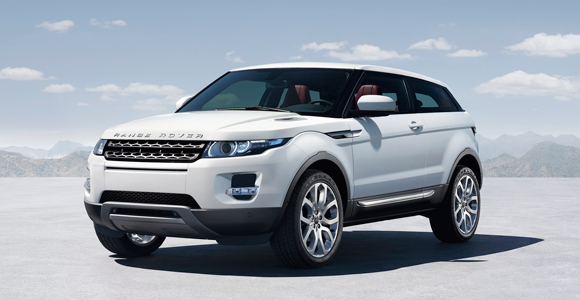
According to a recent release by ScienceDaily, “electromobility makes sense only if car batteries are charged using electricity from renewable energy sources. But the supply of green electricity is not always adequate. An intelligent charging station can help, by adapting the recharging times to suit energy supply and network capacityâ€, it warned.
The magazine cites the German case an example. The European powerhouse wants to have one million electric vehicles on the road by 2020, powered from renewable sources. As clean energy becomes a bigger part of the national grid, this noble goal sounds achievable, says ScienceDaily.
But … “as more and more solar and wind energy is incorporated in the power grid, the proportion of electricity that cannot be controlled by simply pressing a button is on the increase. In addition, there is a growing risk that the rising number of electric vehicles will trigger extreme surges in demand during rush hourâ€, said ScienceDaily.
However, there is hope if there is better technology. “What we need is a smart grid that carries information in addition to power,” says Dominik Noeren of the Fraunhofer Institute for Solar Energy Systems ISE. The structure of the grid has to change from a push system based on energy demand to a pull system based on production output. In Noeren’s opinion, “electric cars are best equipped to meet this challenge.”
When they exist in large numbers, electric vehicles can store a great amount of energy. Usually, cars only circulate for four hours a day, leaving them to idle for another 20 hours. That is plenty of time to recharge them when demand for electricity is lower and wind picks up.
In fact, future mobility based on renewable energy is the focus of this year’s international Solar Summit Freiburg congress, which will take place between October 13th and 15th. The event will bring together international experts from the automotive industry, the electricity industry, the field of hydrogen and fuel cell technology as well as from battery technology, who will be presenting innovative vehicle and drive train concepts and discussing state-of-the-art, sustainable approaches to electric mobility.
“Worldwide, researchers and developers are committed to developing new technical solutions for the use of renewable energies in the field of electric mobility. With time, mobility will gradually become less dependent on crude oil and will increasingly be based on renewable energy carriersâ€, the Fraunhofer Institute for Solar Energy Systems ISE said recently.
Batteries
Electric vehicles also have a problem with batteries. Current ones are not as energy intensive as they need to be and rare metals are required to make them, which ironically could boost the mining industry, one of the least environment-friendly industries in the world. Batteries do not support long distance driving and gasoline engines have to be included in hybrid vehicles to provide long distance capability.
Enter Lonnie Johnson, a former NASA engineer who has developed a battery capable of powering an electric to a 1,000 range, roughly 10 times better than the current lithium ion technology. He says it is ready for an automobile in 12 to 18 months but needs funding to “scale it up”. It is called a “lithium air” battery, and it has energy storage capacity ten times that of the most powerful batteries on the market today.
1,000 would be more than enough. The average daily travel is only 50 km in the United States and that figure is much lower in Europe. Despite that, drivers still expect vehicles that can run for 200+ uninterrupted kilometers, even if that will happen once or twice a year during holidays – when they may as well take a plane or a train.
Watch the video:
Johnson, who is president and CEO of Excellatron Solid State LLC, based in Atlanta, is a respected professional. Recently, he joined about 30 leading battery experts at an historic U.S. Department of Energy (DOE) workshop to gather data for potential federal funding of electric car battery research and development.
The workshop was called “Electrical Energy Storage For Vehicles†and was sponsored by the DOE’s Advanced Research Project Agency – Energy (ARPA -E) which is considering funding a car battery initiative.
ARPA-E’s mission is to support high risk, high impact energy technology R&D to help enable rapid and dramatic reductions in U.S. greenhouse gas emissions and foreign energy imports and to help restore U.S. leadership in energy technology development.
“This was a significant and historic event for the entire electric vehicle industry,” said Johnson. “The goal of the workshop was to gather information on the cost and performance metrics needed to drive the widespread adoption of electric cars and the innovative technologies currently available that have the greatest potential to impact the industry.”
“I am very excited about the tremendous potential for Excellatron’s technology to have an extraordinary impact in helping the country become energy self-sufficient,” said Rep. Scott who has sponsored legislation seeking funding for the company.
We hope so too, but let’s bear in mind that batteries need to be clean and the power must come from renewable sources. Self-suffiency is desirable, but not enough. Even more important is to be sustainanable.






Even a short step is better than no step. Once we make the first few steps then the momentum will carry us forward and innovators such as these will step up to the plate and then the competitive market forces will take over. Great Britan at one time imported wood to burn as fuel because they had cut down all of their trees. Then someone discovered coal. Whales were hunted (some species to extinction) for their oil, then someone discovered petroleum. We just have to create an environment where innovators will be rewarded and companies will take the necessary risks and NOT “Kill the Electric Vehicle” as before. Theodore Sumrall, Ph.D.